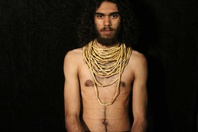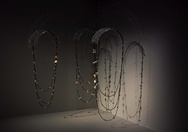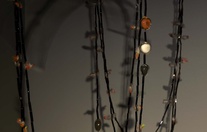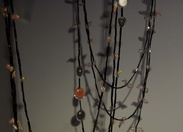Maree Clarke
Wurundjeri/Boon Wurrung Country, Narrm (Melbourne). Yorta Yorta/Wamba Wamba/Mutti Mutti/Boonwurrung, south-east region
2021
Displayed 2021 at Museum of Contemporary Art Australia
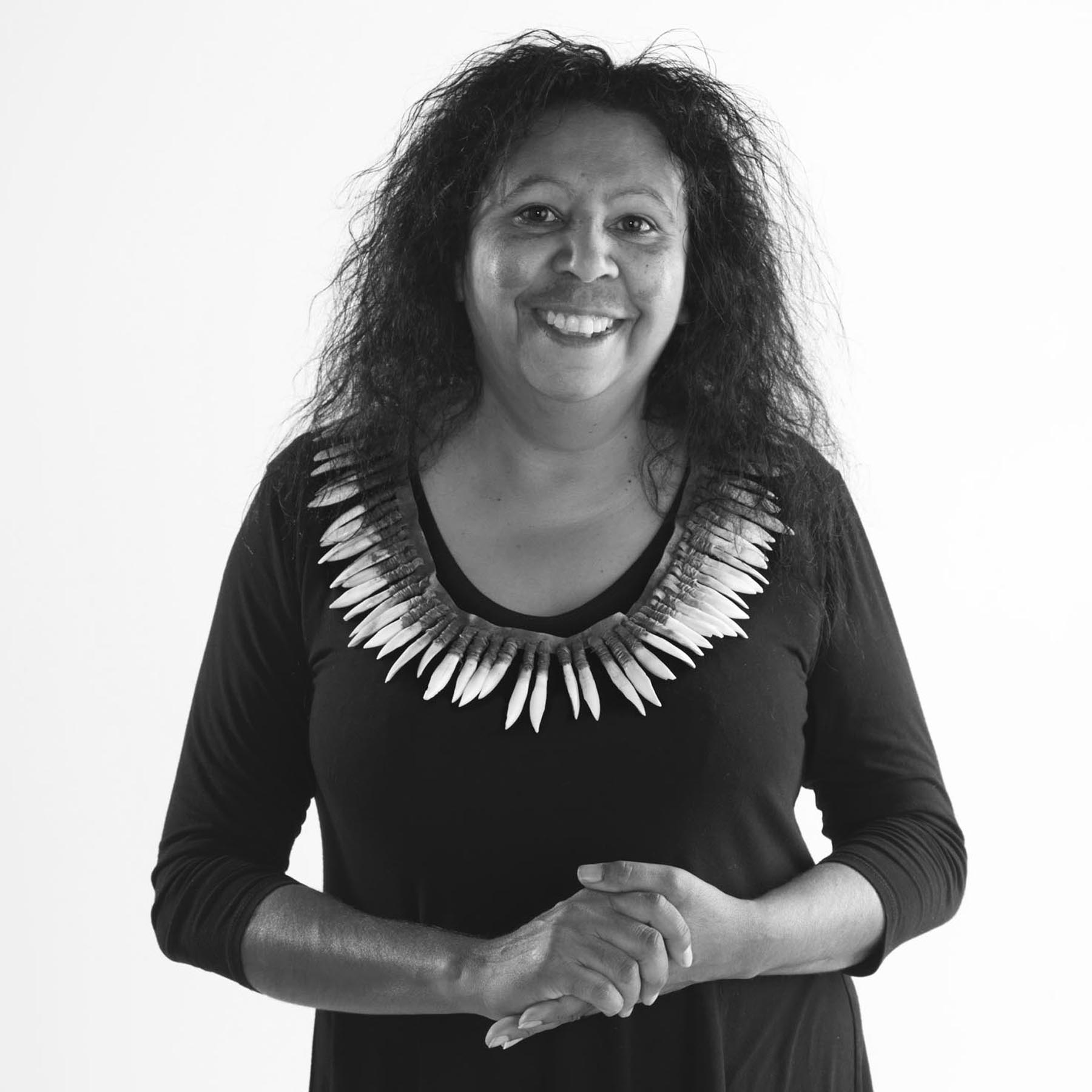
Maree Clarke
Born 1961, Wamba Wamba/Latji Latji/Wadi Wadi Country, Swan Hill, Victoria. Lives and works on Wurundjeri/Boon Wurrung Country, Narrm (Melbourne). Yorta Yorta/Wamba Wamba/Mutti Mutti/Boonwurrung, south-east region
Maree Clarke is a pivotal figure in the reclamation and promotion of south-east Australian Aboriginal art practices. Her continuing desire to affirm and reconnect with her cultural heritage has seen her revivification of traditional possum skin cloaks and her contemporary necklace designs using river reeds, kangaroo teeth and echidna quills. Her multimedia installations including photography, sculpture and video further explore the customary ceremonies and rituals of her Ancestors. Clarke’s work has featured centrally in many exhibitions across Australia, and is the focus of a major career survey, Ancestral Memory, at the National Gallery of Victoria, Melbourne in 2021.
Photograph: Jon Augier
Image courtesy the artist and Vivien Anderson Gallery, Melbourne © the artist
Artist text
by Megan Robson
Maree Clarke is a Yorta Yorta/Wamba Wamba/Mutti Mutti/Boonwurrung woman who grew up near Mildura along the Murray River in north-west Victoria. An artist, educator and curator, she has played a significant role in researching, reclaiming and reviving dormant south-east Aboriginal cultural practices for over 30 years. Working across sculpture, jewellery, photography and public art, Clarke often uses new technologies, materials and techniques in her artworks, drawing connections between the past and the present. Central to her practice is a belief in the role art can play in continuing culture for future generations.
Clarke’s multidisciplinary practice is grounded in extensive research. Her working methodology often involves photographing significant objects in institutional collections; she then begins a long process of experimenting in her home studio to recreate the objects using current materials and techniques. She notes: ‘my practice is revivifying research. It starts with the research I do and then I turn that research into art, telling stories through art in a contemporary way.’ (1)
Well known for her inclusive and intergenerational working processes, Clarke often brings her ‘family along on the journey’ and for many years has mentored young people from the Victorian Aboriginal Child Care Agency on projects that revive cultural practices. Every aspect of the creation of her artworks, from the sourcing of materials to preparing and finishing the objects, is taught to her younger collaborators. For Clarke, the ‘most important’ aspect of her practice is the ability to pass on her knowledge and skills to the next generation.
At the Museum of Contemporary Art, Clarke exhibits a series of artworks based on south-east Aboriginal body adornments made from kangaroo teeth, echidna quills and river reeds created over the last ten years, alongside photographs of her nephews and collaborators wearing two of the necklaces. Kangaroo tooth body adornments were traditionally presented to individuals of high status within the community. The process of creating a kangaroo tooth necklace is incredibly labour-intensive: removing the sinew and teeth, preparing the leather, mixing the ochre and wattle resin, and finally, binding the teeth with sinew string. Clarke sources the materials for her necklaces from roadkill found on her frequent trips back to Country. The artist only uses the two bottom scissor teeth for her contemporary necklaces although, traditionally, teeth of different sizes would have been used. She photographs every kangaroo she works with, an act which acknowledges and pays respect to the animal.
Around eight years ago, Clarke began making her large-scale river reed necklaces – originally talismans given to visitors passing through Country as a sign of safe passage and friendship. Together with her family, Clarke collects reeds from the Maribyrnong River in Victoria on Boonwurrung Country. They are threaded together with cockatoo, galah or crow feathers that she sources from roadkill. Measuring up to 40 metres in length, these ‘supersized’ artworks reflect on the scale of loss for Indigenous people – loss of knowledge, of language, of life, of land – since colonisation. The physicality of the works also honours and celebrates the oldest continuing culture in the world and the ‘knowledge and skills that are still strong today’.
More recently, Clarke has been working with Canberra Glassworks to create glass river reeds, kangaroo teeth and seed pods, often filled with ochre. She combines the glass pieces with objects including feathers, gold-plated kangaroo teeth, echidna quills and crystals to create striking necklaces that celebrate culture through contemporary technologies and techniques. Clarke’s constantly evolving practice is driven by her dedication to finding new ways to tell the ‘stories of her mob’ for the next generation.
(1) Maree Clarke quoted in Made/Worn: Australian Contemporary Jewellery, Australian Design Centre, Sydney, at com/madeworncontemporaryjewellery/maree-clarke/, accessed 11 Mar 2021.
